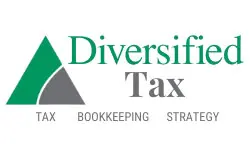What Is Tax Loss Harvesting?
If your financial advisor or tax professional refers to tax loss harvesting, you may be unsure about what that means. While it sounds like a farming term, tax loss harvesting is a tax strategy that may be beneficial to some investors depending on how their investments performed and their specific tax situation.
What is tax loss harvesting?
If you’ve had a loss on an investment, you can sell it to offset any gains you’ve made on other investments to reduce your tax bill. By selling off the poorly performing investments that have lost value, you minimize the taxes owed on capital gains. Tax loss harvesting can be used on taxes owed from capital gains, or ordinary income.
If you sell an investment for a profit, you owe capital gains on the profit which is determined by how long you’ve held the asset. Capital gains rates may range from your normal income tax rate if you’ve held the investment for under a year, to up to 20% if you’ve held that investment for over a year.
Since the investment you’d be potentially selling is not profitable, you won’t owe capital gains. You can use the money that you make from selling that investment and purchase another investment in an attempt to recoup that loss.
Tax loss harvesting does not apply to retirement accounts like your 401(k) as these accounts grow tax deferred. Tax loss harvesting is applicable to accounts that are taxable investment accounts, that are subject to capital gains tax.
When can you do tax loss harvesting?
To properly harvest the losses on an investment that is down, you’ll need to complete a sales transaction before the end of the tax year. In 2022, if you want to harvest losses, you must complete the transactions by December 31st, 2022.
How much can you tax loss harvest?
In a year, married couples filing jointly can have up to $3,000 in realized losses to offset capital gains or their ordinary on their federal income taxes. If you’re married and filing separately, the limit is $1,500 in a year. Additional losses can be carried forward and used on future returns.
What are wash sales?
Wash sales prohibit you from purchasing the same stock that you’ve just sold, for a time period of 30 days after the sale, if you’ve sold that investment at a loss. It also prohibits you from buying a stock that is substantially identical to the one that you’ve sold.
The rules for wash sales are intended to keep you from utilizing tax loss harvesting to gain the benefits of the loss, and then repurchasing the same stock that you’ve sold (or one that is essentially the same). You are allowed to purchase an investment that is in the same industry as the one that you’ve sold, which would enable you to keep a similar asset allocation to what you’ve previously maintained.
What are cost-basis calculations?
When you purchased an investment, you paid a cost-basis for the security, and you need to know that amount when you sell. If you made a single purchase of the entire stock at once, you may easily have this information. However, if you purchased this stock over time or used dollar-cost averaging, it may make this process more complicated to determine.
A note on administrative costs
To conduct tax loss harvesting, you’ll need to complete the transaction and sell the investment while the market is down. This can create a good bit of administrative work each time that you process a transaction. Therefore, you should be sure that the benefit to the tax loss harvest will be worth the cost and the trouble of the administrative work to complete the transaction. To stay up to date on when would be the best time to harvest, it’s a good idea to work closely with both your financial planner and your tax team. When they work together as a team, you’ll have the best advice from both a financial planning and tax planning standpoint.
Want tax tips delivered to your inbox?




